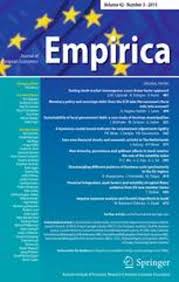
Inflation Puzzles, the Phillips Curve and Output Expectations: New Perspectives from the Euro Zone
Confidence in the Phillips Curve (PC) as predictor of inflation developments along the business cycle has been shaken by recent “inflation puzzles” in advanced countries, such as the “missing disinflation” in the aftermath of the Great Recession and the “missing inflation” in the years of recovery, to which the Euro-Zone “excess deflation” during the post-crisis depression may be added. This paper proposes a newly specified Phillips Curve model, in which expected inflation, instead of being treated as an exogenous explanatory variable of actual inflation, is endogenized. The idea is simply that if the PC is used to foresee inflation, then its expectational component should in some way be the result of agents using the PC itself. As a consequence, the truly independent explanatory variables of inflation turn out to be the output gaps and the related forecast errors by agents, with notable empirical consequences. The model is tested with the Euro-Zone data 1999–2019 showing that it may provide a consistent explanation of the “inflation puzzles” by disentangling the structural component from the expectational effects of the PC.





